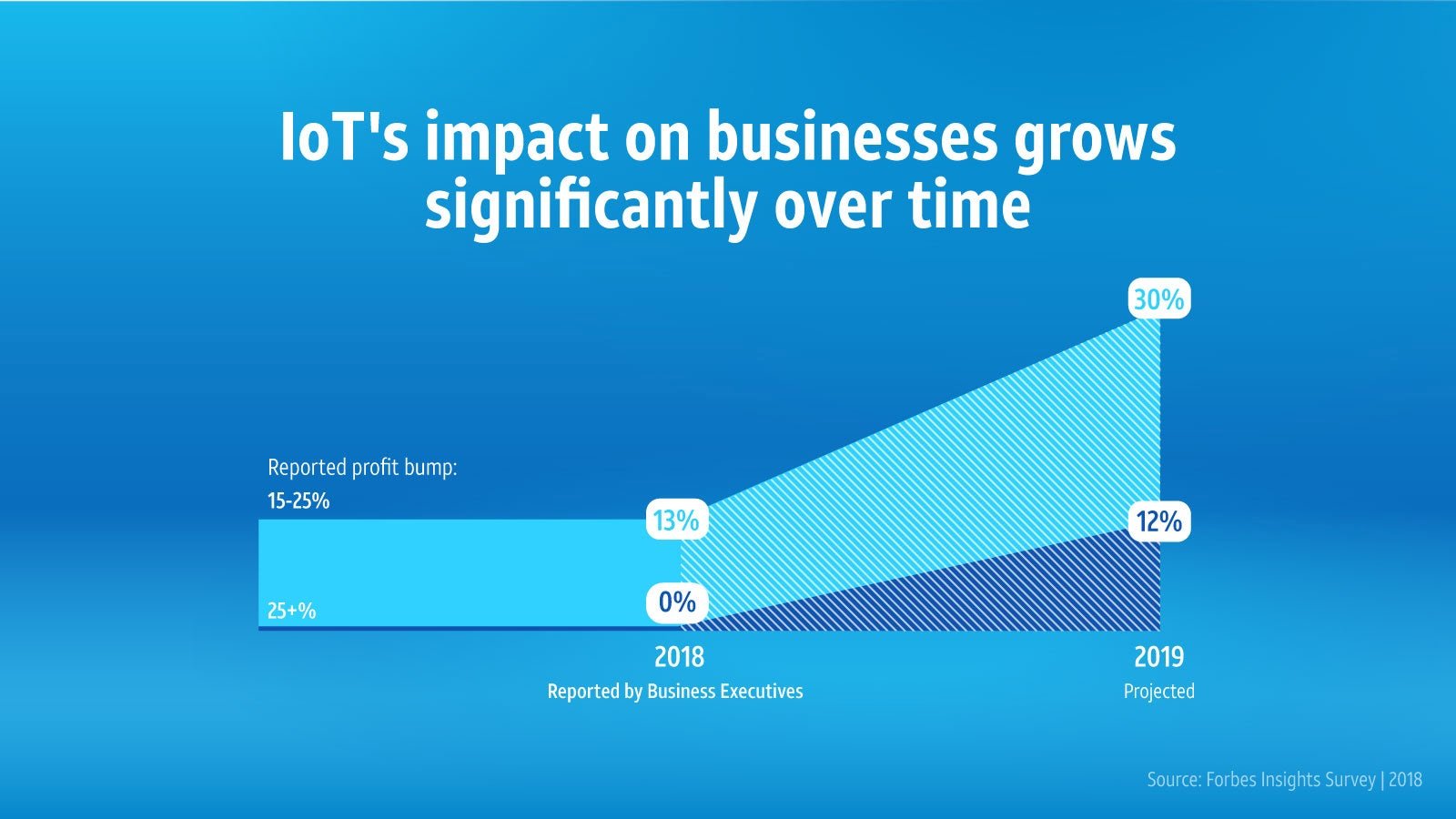Three ways to optimize your company’s IoT investment
Business leaders often expect overnight results from their Internet of Things (IoT) implementations. But recent data suggests that when it comes to IoT adoption, companies that allow efforts sufficient time to mature are the most satisfied with their results. A 2018 Forbes Insights survey found that 13% of executives reported a profit bump of 15–25% that year as a result of their IoT investments. A greater number of respondents, 30%, expected their profit to grow at the same rate by the following year. The findings suggest that as IoT-based processes take root within a midsize organization’s operations, they begin delivering clearer, more measurable results.


Business leaders often expect overnight results from their Internet of Things (IoT) implementations. But recent data suggests that when it comes to IoT adoption, companies that allow efforts sufficient time to mature are the most satisfied with their results. A 2018 Forbes Insights survey found that 13% of executives reported a profit bump of 15–25% that year as a result of their IoT investments. A greater number of respondents, 30%, expected their profit to grow at the same rate by the following year. The findings suggest that as IoT-based processes take root within a midsize organization’s operations, they begin delivering clearer, more measurable results.
As the cost of connected hardware continues to plummet, and as midsize businesses begin to grasp the potential of IoT to streamline operations, reduce costs, increase security, and establish new revenue streams, the middle market’s use of IoT is on the rise. Consider supply chain tracking for a florist with five brick-and-mortar locations in a major metropolitan area. The company may use IoT-enabled devices to track sensitive stock, optimize drivers’ routes and safety protocols, automate checkout, keep customers updated on the delivery status of orders, and monitor the temperatures and efficiency of coolers at their stores.
As multiple IoT systems become core to organizations’ logistics, it’s important that these connected platforms work in tandem. But integrating such systems comes with its own set of challenges: In fact, a clear sign that a company is ready to upgrade is when the synthesis of IoT data slows processes down and is no longer sufficient to support long term strategy. At this point companies should consider a single, managed IoT solution.
Products like AT&T Asset Management and Vehicle Solutions may be the answer. Here are a few signals it’s time to upgrade and the solutions to deploy.
Three signs it’s time to consider IoT management
Dedicated IoT management helps midsize businesses to efficiently master transportation planning, cut costs, collect detailed business insights, and track employee productivity. It also helps companies optimize the benefits of their smart systems. These are the signs that you should consider a single solution.
🔍 You’ve recently installed a number of IoT products to manage your supply chain—but individual systems remain siloed.
🔍 Multiple sources of data result in increased friction across workstreams.
🔍 Employees use IoT solutions to streamline logistics, but they need to pull data from many different sources in order to collaborate across teams.
Take your IoT efforts to the next stage
Before IoT technology can make a meaningful impact, it first must be holistically integrated into your workflow. IoT systems should be intuitive and accessible. Here are a few guidelines to keep in mind when upgrading your IoT management solution.
💻 Look for a standardized platform that offers menu-based pricing and user-friendly, cloud-based resources.
💻 Give IoT systems sufficient time to prove they work.
💻 Consolidate data into a single source.
IoT is foundational to many midsize companies’ technology stack—and a single, hosted solution can help growing businesses manage their IoT-infused data streams. A knowledgeable consultant takes the pressure off IT teams and improves efficiency. AT&T Business offers Managed Services to assist with holistic IoT integration and training, showing companies how to transform their current systems into a single, hosted solution that employees at all levels can easily navigate.